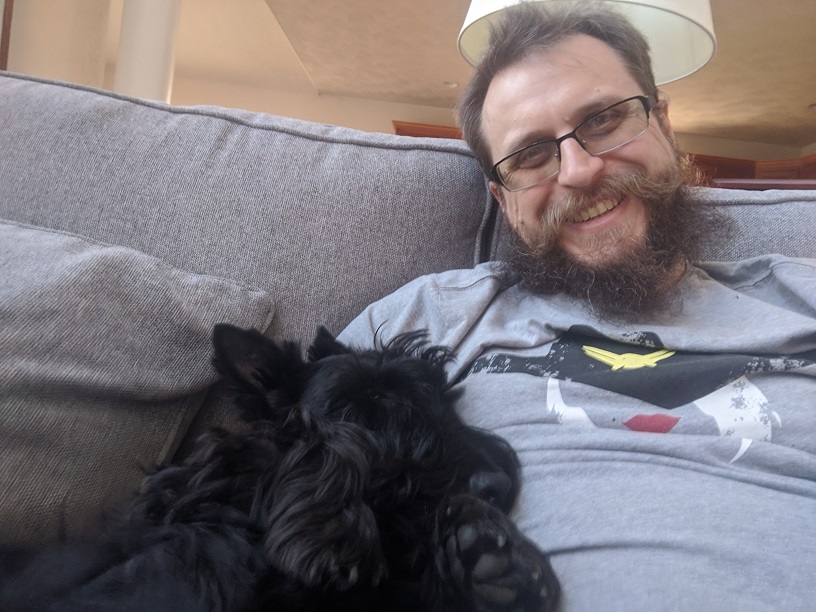I’ve recently started playing guitar again after years of watching it collect dust in the spare bedroom. It’s just not something that I found myself having time for while I was teaching. Now that the calluses on my fingers have started to return, I’m starting to remember what it was like to learn how to play guitar in the first place and noticing parallels with learning mathematics that I hadn’t considered before. I think I underestimated the degree to which mathematics is a performance art.
As a teacher, I think part of the difficulty with creativity is that it doesn’t fit well with our assessment driven school culture because it’s too abstract to measure. Our inability to grade creativity doesn’t mean we shouldn’t attempt to foster it in students. Instead, I’d argue that creativity is evidence that our very concept of grading is inherently flawed. We do a disservice to mathematics by presenting it as a mechanical process that is “right or wrong”. In reality, mathematics is about finding an artistic balance between “wrong” and “useful”. Mathematics is at it’s most beautiful when it precisely illustrates the boundary between what we think is true and the reality of truth.
When I first started playing guitar, I struggled to hold down the strings with sufficient force and they’d rattle against the frets as they vibrated. Obviously the solution to this was more practice, so my guitar teacher assigned my some warm-up routines. I was kind of reluctant at first, so he offered me some advice. He told me something to the effect of “when you see someone playing guitar, you don’t see all the thousands of hours they spent practicing to get there”. Now, more than 25 years later, these riffs are still one of the first things I find myself doing when I pick up a guitar. Their memory is ingrained in my fingers.
There’s a big gap between this rote memorization of exercises and producing an original work. I don’t think I would have ever developed the capacity to improvise on the guitar without practicing a variety of different scales, but also know that no amount of repetition would magically turn me into a composer. To get better at creating music, one must practice creating music. If I’m being perfectly honest, most of that music I create isn’t even that good, but I’ve learned to accept that’s just another part of the creative process. Nobody hears all the flops that had to be written before making that one hit record. Time is a necessary element for any creative process.
As a teacher, the long term effects of my mathematical practice were readily apparent. I could take one glance at a high-school level problem and mentally calculate the solution so quickly that it seemed like magic. Sometimes math needs that bit of awe that you get when you hear a shredding solo from Steve Vai. At the same time, you don’t want to intimidate a new learner either. No aspiring guitarist starts out with “Teeth of the Hydra”, but there’s something special about seeing what’s possible. Every artist has some source of inspiration that drives them.
More practically, the real application of this procedural fluency was that it allowed me to focus my attention on the student’s model of a math problem rather than my own. Much like playing in a band, communicating mathematical ideas to others necessitates the ability to listen closely and willingness to adapt. Not only do the band members communicate with each other to hold tempo and maintain harmony, but the band as a whole feeds off the audience’s energy as well. Having a clearly identified target audience gives direction to the creative process, even when that audience is only oneself. Creativity depends on a foundation of shared cultural experiences between the artist and audience.
Cultural conventions in music provide another essential component of creativity: constraints. It’s not required that a song to be 3-5 minutes long, but knowing that that’s the average length for radio play allows a band to focus the creative effort on what to fill those airwaves with. Forced limitations of scope can actually encourage creative solutions by reducing the burden of what needs to be created. Most academic papers follow a standardized format because it allows the writer and reader to focus on the content instead. Classroom routines allow teachers and students to focus on addressing specific learning objectives. This must be done in careful moderation though, because too many constraints can stifle creativity by denying agency.
I think this sense of agency is perhaps one of the key elements that made my experiences with math differ from the norm. I enjoyed doing math so I constantly sought out new opportunities to experience it. I didn’t come into a math class asking “when am I ever going to use this?” because I already had use cases in mind. I think that one of the great travesties of education is that the system doesn’t allow for students to assert full ownership over their own learning. The idea of forcing every student to learn guitar whether they want to or would be ludicrous, but our society confers special treatment to mathematics as a result of it’s perceived pervasiveness. Creativity cannot manifest without providing the creator with choices to make.
I’ve come to terms with the fact that I can’t produce creative work at will. Whether it’s math or music, I don’t know when that flash of sudden insight will occur or if it even happen at all. It’s out of my control. What I can do is to assert control over my environment to set up favorable conditions for that spark to ignite:
- I can set aside time to focus on the creative process.
- I can provide myself with a safe space to make mistakes.
- I can surround myself with prior art for inspiration.
- I can learn more about the social context I share with my target audience.
- I can set additional constraints on the outcome to make the task more manageable.
- I can decide how much of myself I’m willing to put into the work.
In a society that’s increasingly driven by automation, I think there’s going to be a growing need for fostering creative thinking in schools. This change will be difficult and will require us to change how we conceptualize learning. Perhaps a place to start is to rethink math classes to be more like a course in music appreciation. Much like it would be impossible to understand the impact of punk rock or hip hop without understanding the social-political climate it developed in, we can’t expect students to understand the impact of mathematical developments if we take them out of context. We need to allow students space to enjoy math in its natural environment instead of distilling it down to a sequence of mindless practice exercises. Raising a generation of creative problem solvers will require an educational system that places the needs of students over the ideals of society.



